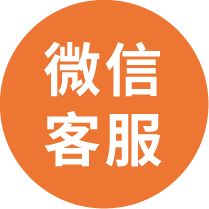FHOD1 Mouse Antibody [Clone ID: M352]
CNY 3413.00
货期*
5周
规格
Product images

推荐一起购买 (1)
beta Actin Mouse Monoclonal Antibody, Clone OTI1, Loading Control
CNY 300.00
CNY 1430.00
Specifications
| Product Data | |
| Clone Name | M352 |
| Applications | IHC, WB |
| Recommend Dilution | WB: 1:250 |
| Reactivity | Human |
| Host | Mouse |
| Immunogen | FHOD1 recombinant protein that included the full length human FHOD1 sequence. This sequence has 50% homology to human FHOD3, and low homology to other formin family members. |
| Specificity | The antibody detects a 140 kDa* protein corresponding to the apparent molecular mass of FHOD1 on SDS-PAGE immunoblots of human K562 and Jurkat, and has weak reactivity to FHOD1 in mouse C2C12. |
| Isotype | IgG1 |
| Formulation | PBS + 1 mg/ml BSA, 0.05% NaN3 and 50% glycerol |
| Concentration | lot specific |
| Purification | Protein A Purified |
| Conjugation | Unconjugated |
| Storage Condition | Storage at -20°C is recommended, as aliquots may be taken without freeze/thawing due to presence of 50% glycerol. Stable for at least 1 year at -20°C. |
| Predicted Protein Size | 140 |
| Database Link | |
| Background | Formins include several families of proteins that regulate actin cytoskeletal dynamics via two conserved formin homology domains, FH1 and FH2. The FH1 region contains poly-proline stretches that promote interactions with profilin. The FH2 domain, located C-terminally to the FH1 domain, is highly conserved in formin proteins and possesses actin nucleation and polymerization activities. Through cooperation of FH1 and FH2, formins construct actin-based structures comprising linear, unbranched filaments that are used in stress fibers, actin cables, microspikes, and contractile rings. Several mammalian formins, including mDia1, FRL, and formin homology domain protein 1 (FHOD1) are inhibited through an intramolecular interaction between the C-terminal Dia autoregulatory domain (DAD) and its recognition region at the N-terminus. In FHOD1, this autoinhibitory interaction is disrupted through phosphorylation of Ser-1131, Ser-1137, and Thr-1141 by ROCK. Subsequent FHOD1 activation leads to stress fiber formation. In endothelial cells, thrombin activates this ROCK pathway, leading to FHOD1-mediated stress fiber formation. |
| Note | Protein G purified tissue culture supernatant. |
| Reference Data | |
Documents
| Product Manuals |
| FAQs |
| SDS |
Resources
| 抗体相关资料 |
Customer
Reviews
Loading...


